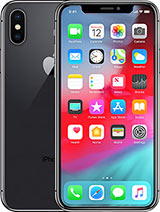Main
Model
Price
Advantages
launch
Announced
Status
platform
OS
Chipset
CPU
GPU
camera
Rear
Front
Video
Features
display
Size
Resolution
Technology
Protection
Multitouch
battery
General
Talk time
Playing Music
Charging
body
Dimensions
Weight
Build
SIM card
Miscellaneous
Colors
memory
Internal Storage & RAM
Card slot
comms
WLAN
Bluetooth
GPS
NFC
Radio
USB
Infrared port
features
Sensors
Messaging
Browser
sound
3.5mm jack
network
Technology
2G bands
3G bands
4G bands
Speed
GPRS
EDGE
Videos
Summary
The Huawei Mate 20 is equipped with a faster CPU Octa-core (2x2.6 GHz Cortex-A76 & 2x1.92 GHz Cortex-A76 & 4x1.8 GHz Cortex-A55) in comparison with the Apple iPhone XS. It is an important specification of this phone because fast CPU allows you to run a few apps at once.
The Apple iPhone XS has 4K UHD (1125 x 2436 pixels) display resolution with 462 ppi pixel density that is better than the Huawei Mate 20 4K UHD (1080 x 2244 pixels) display resolution with 381 ppi pixel density. It makes this phone a right choice for reading books. The iPhone XS device is easier to use as it has smaller dimensions than the Mate 20: 143.6 x 70.9 x 7.7 mm versus 158.2 x 77.2 x 8.3 mm. The Apple iPhone XS model weight 177g that is 11g less in compare with the weight of the Huawei Mate 20.
The Mate 20 model has a card slot. It's a pleasant bonus: the owner can easily expand memory storage and transfer files. The Mate 20 contains a 3.5mm jack that is the most popular way to connect earphones for listening music. The Mate 20 has a better battery life as it is equipped with 4000mah battery that is 1342mah bigger than the Apple iPhone XS cell. That's mean this phone will live longer without charging.
The Huawei Mate 20 has 7 advantages and the Apple iPhone XS only 3 so the Mate 20 becomes the best choice. Get the list of the best offers on Amazon.


